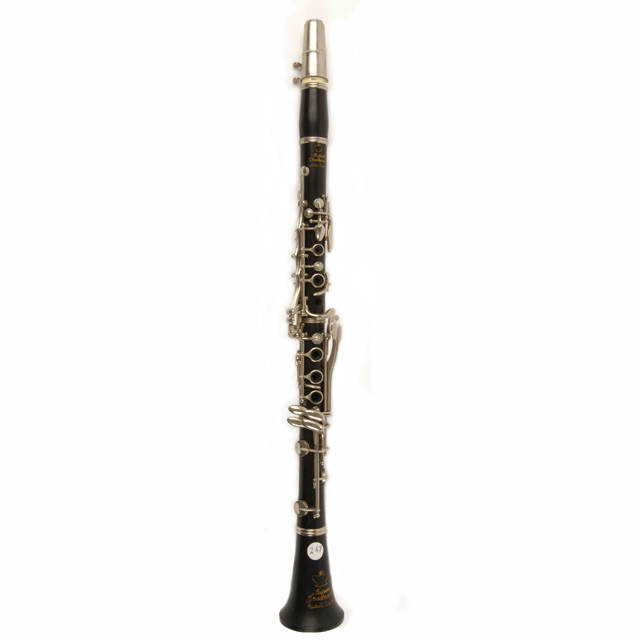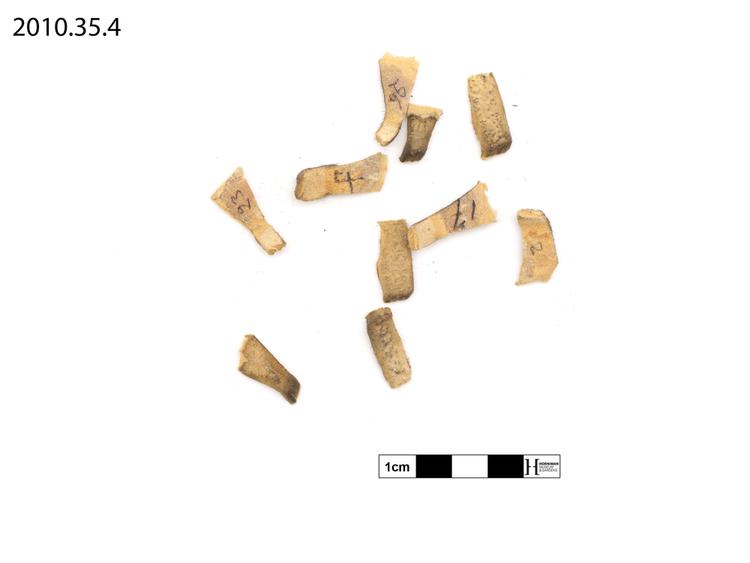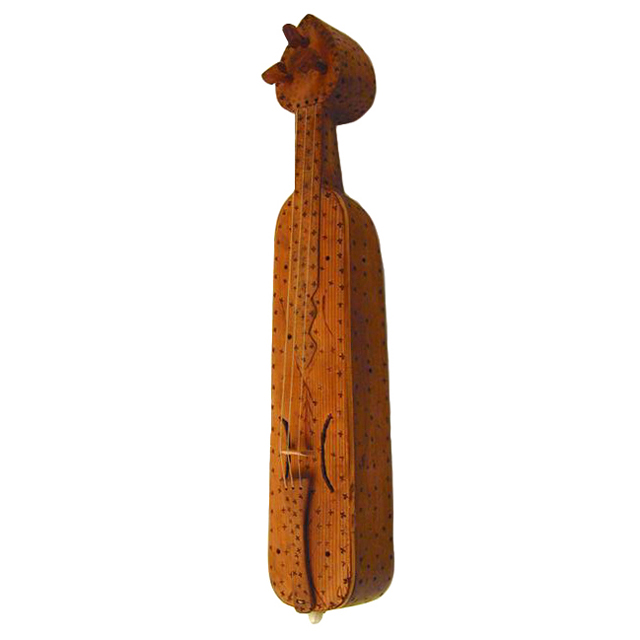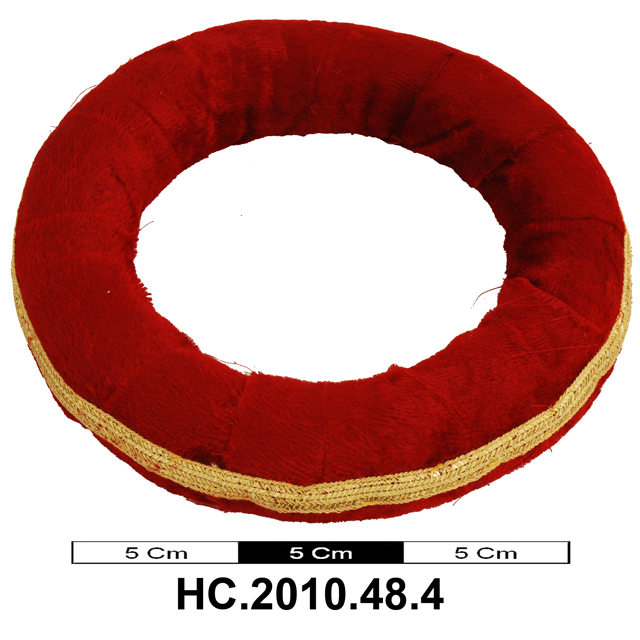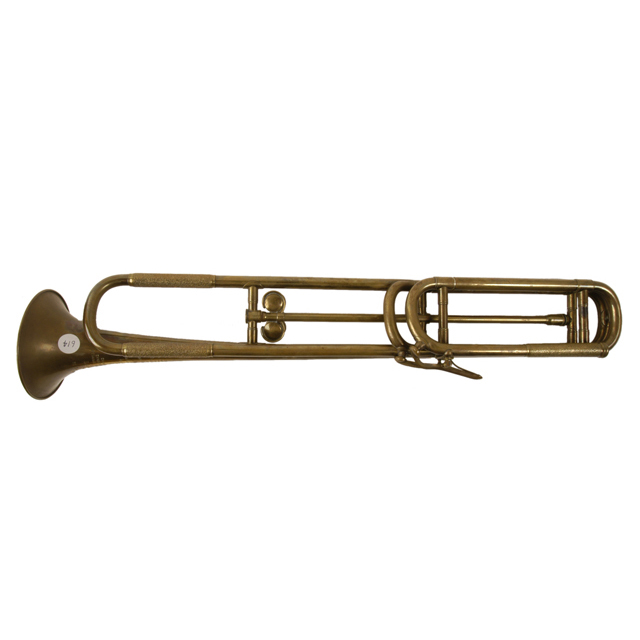


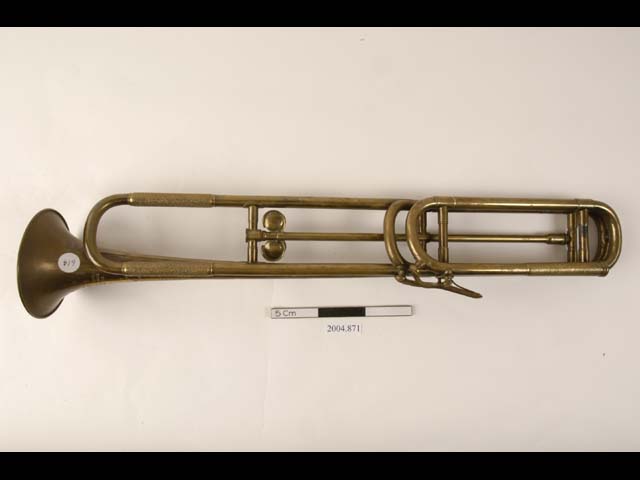
Double-slide trumpet. Brass tubing. Two slides of the English type moved together by brass finger-pieces. Mouthpiece missing. Decorative embossed ferrules and mouthpiece receiver sleeve. Double water key with single touchpiece. Stamped inscription on bell appearing within a circular frame: MEDAILLE/1ST CLASSE/EXPOSITION/UNIVERSELLE/1855; Stamped beneath this in a stylised font: Medaille/LONDRES 1862/Exposition Universelle/PARIS 1867/Medaille Honneur/EN ARGENT/ANTOINE COURTOIS & MILLE/MILLE Sr/FACTEUR DU CONSERVATOIRE NATIONAL/88 rue Des Marais St. Martin/Paris/1er PRIX/GRANDE MEDAILLE D'OR/EXPOSITION DE MOSCOU 1872/MEDAILLE D'OR PARIS 1878 & 1889/S. ARTHUR CHAPPELL/SOLE AGENT/52 New Bond Street/London
The single slide trumpet was popular in Britain in the mid-19th century as it allowed a greater number of pitches to be played than on the earlier natural trumpet. The double slide was invented by William Wyatt in 1890. His patent specification stated that 'An additional slide is added and is secured to the ordinary slide and moves with it. This makes an extra length of tube available so that any note down to E♭ (in the third space of the bass clef), can be obtained.' The addition of the second slide made the first bow of the standard trumpet (the curved section next to the bell) redundant, but false tubing was added for this section. Some writers have speculated that this tubing is purely ornamental, to make the instrument look more like other trumpet designs, but Wyatt's patent states that it is required to support the bell. The double slide trumpet never gained the popularity of its single slide predecessor because it was invented at a time when slides were giving way to valves in orchestral trumpet design, and by 1890 the valve trumpet in F was well on its way to becoming the standard in British orchestras.




